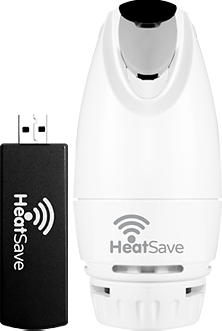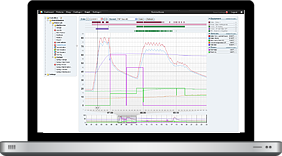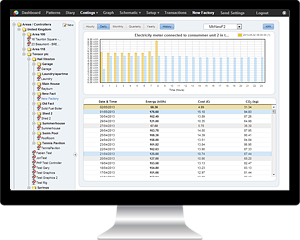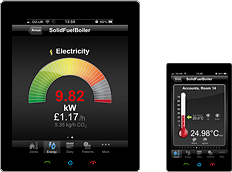University of Salford Uses HeatingSave Energy & Environmental Monitoring System

The Smart Heritage Building Performance Measurement for Sustainability (HBIM) project focuses on studying methods for smart energy and environmental performance measurement in heritage buildings, for sustainability and heritage preservation purposes.
The University of Salford’s Applied Buildings and Energy Research Group (ABERG) is one of the main partners in this research initiative and, as part of the project, has installed a HeatingSave Energy & Environmental Monitoring System in Joule House, a Grade II listed Georgian house, recognised as a heritage site by the City of Salford. The data collected from the heritage occupied building will be analysed for sustainability impact and building health effects.
The three story structure was the home of scientific pioneer James Prescott Joule. The scientist was born at the house in Salford in 1819 and lived there until 1854. During his time there, he conducted experiments in the basement of the building, studying heat and how it related to mechanical work. This led to the first law of thermodynamics and the naming of an international unit of energy after him.
The original building, comprised early 19th century bricks and welsh slate had a two story extension added and is currently used as offices by staff at the University.
Dr. Richard Fitton MRICS is a Lecturer in Energy Efficiency in the School of the Built Environment. He leads the monitoring work undertaken within ABERG and is involved in a number of projects with regards to co-heating, U Value measurement, as well as product and retrofit package testing within the Energy House.
Richard was directly involved in the selection of HeatingSave as the building performance monitoring system for the Joule House project. When asked what motivated to use the HeatingSave Energy & Environmental Monitoring System, Richard’s reply was “We had used HeatingSave before and found it to be very reliable.”
“The HeatingSave Energy & Environmental Monitoring system is cost effective and stable. Even more importantly than that, HeatingSave, as a company, perfectly understands what we’re trying to achieve and offers us full support.” he added.
The HeatingSave system was installed by ABERG staff on their test site at Joule House in the second half of 2016 and Richard described the process as simple and intuitive.
In Richard’s own words, “The HeatingSave system was installed by university personnel. We haven’t encountered any major problems during the install.”
Asked what he liked most about the HeatingSave system, Richard’s replied, “HeatingSave has made it easier to collect energy consumption data, as well as specific environmental data – temperatures, CO2, RH, VOC and occupancy.”
The system collects internal and external temperature data, along with information on how the heating system works and details of energy use. It also monitors air quality including carbon dioxide, relative humidity, volatile organic compound levels and the way a building is used in terms of its occupancy, light and sound levels and the occupants’ activities and lifestyles
Using a password protected standard internet connection, sensors can quickly be set up to review and quantitatively analyse the data with user-friendly software graphics, via a laptop, PC, mobile phone or tablet-based device.
“The system is really good and easy to use.” he added.
Richard also likes the HeatingSave Energy Monitor T3521 Hubs for being “very compact, easy to install and also cost-effective.” The Hub is the centrepiece of the HeatingSave Energy Monitoring System. It uses a high-performance, low-power an ARM Cortex-A8 processor to provide the computing power for the Linux based software system, while its compact design allows it to be quickly accessed via the web
To each Hub you can add 100’s of wireless sensors of all types, even our wireless Thermostatic Radiator Valves (“TRV’s”) to provide a complete building heating management, only buying the sensors that you need.
Data is constantly and automatically collected from the T3521 Hub’s by the cloud based HeatingSave Dashboard. The Dashboard can store billions of transactions for subsequent analysis and for consolidated visualisation of the data. It also provides drill-down views of the energy use and provides a clear understanding of the real impact of energy efficiency measures through pre-installation analysis and post-installation monitoring.
“We use the graphs and the data visualization software developed by HeatingSave and they are very good.” commented Richard. “The cloud based HeatingSave Dashboard is easy to use and intuitive.” he added.
Richard added that he is very happy with the quality of the after-sale service from HeatingSave, “We have called the HeatingSave help desk service on a couple of occasions and they have consistently delivered a very good level of service.”
Would the University of Salford’s Applied Buildings and Energy Research Group recommend HeatingSave to other researchers in the energy efficiency segment? “Yes we would, and, in fact, we have already recommended the system to our colleagues at UWE Bristol and elsewhere” was the reply.
The Research Group also plans to expand their use of the HeatingSave monitoring system. Says Richard, “We are currently looking at 2 new projects that will involve multiple HeatingSave energy and environmental monitors and sensors.”
Summing up his experience of HeatingSave, Dr. Richard Fitton MRICS said, “HeatingSave delivers very good value for money. The system is very easy to use and the company behind it has proved to be very responsive to our needs.”
…………………………………………………………………………………………………………………………………………………………………………………………………………………………………………………………………………………..
Customer Information
Applied Buildings and Energy Research Group (ABERG)
School of the Built Environment
University of Salford
G16a, Cockcroft Building
Salford, Greater Manchester
M5 4WT
Phone: +44 (0) 161 295 6804
Web: http://www.salford.ac.uk/research/best/research-groups/applied-buildings-and-energy
Email: r.fitton@salford.ac.uk






